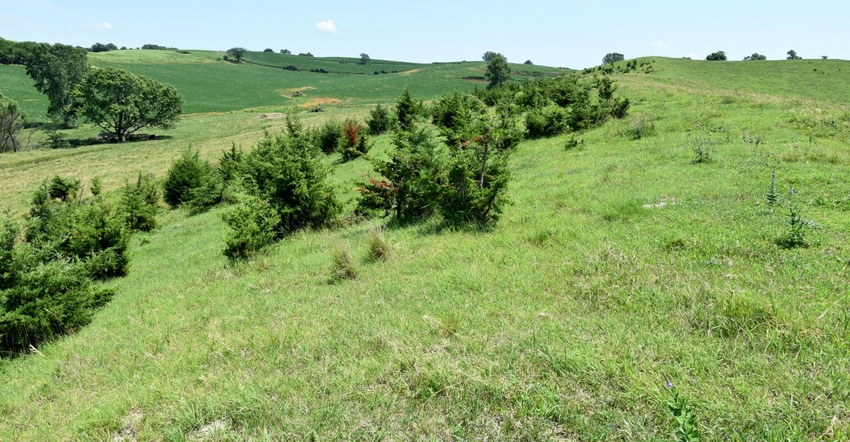December 17, 2019

USDA opened the sign-up period for the Conservation Reserve Program on Dec. 9, the first general sign-up in four years. Farmers and landowners who enroll receive a yearly rental payment for voluntarily establishing long-term, resource-conserving plant species such as approved grasses or trees to control erosion, improve water quality and develop wildlife habitat on marginally productive ag land. CRP contracts are for 10 to 15 years.
The deadline to sign up for the general CRP is Feb. 28, while sign-up for the continuous CRP is ongoing. “CRP is one of our nation’s largest conservation efforts and a critical tool to help producers better manage their land while conserving natural resources,” says U.S. Ag Secretary Sonny Perdue. “The program marks its 35th anniversary in 2020, and we hope to see one of our largest sign-ups in many years.”
2018 Farm Bill raised ceiling
The 2018 Farm Bill raised the cap for enrollment to 27 million acres; it was 24 million under the 2014 Farm Bill. CRP currently has 22 million acres enrolled. You can enroll in CRP for the first time or continue your participation for another term. USDA estimates 7 million acres are eligible to enroll in the program, including additional acres allowed by the 2018 Farm Bill and the number of acres in expiring CRP contracts.
Signed into law in 1985, CRP was primarily intended to control erosion and potentially stabilize commodity prices by taking marginal land out of production. The program evolved over the years, providing conservation and economic benefits.
Nationally, CRP has prevented more than 9 billion tons of soil from eroding, enough to fill 600 million dump trucks, USDA says. It has reduced nitrogen and phosphorous runoff relative to annually tilled cropland by 95% and 85%, respectively. It has sequestered an annual average of 49 million tons of greenhouse gases, equal to taking 9 million cars off the road.
CRP has created more than 3 million acres of restored wetlands while protecting 175,000 stream miles with riparian forest and grass buffers. CRP benefits bees and other pollinators and increases wildlife populations. By enrolling in CRP, producers are improving water quality, reducing soil erosion and restoring habitat. This spurs hunting, fishing, recreation, tourism and other economic development in rural America.
CRP enrollment options
CRP may not be as attractive as a guaranteed source of income as in the past. Payments for land entering through the general enrollment will be 85% of the average county rental rate. Previously, USDA paid the county average. The general sign-up will be followed by enrollment periods for a grasslands option and a short-term land idling option.
CRP general sign up will be held annually, says Amanda DeJong, state director for USDA Farm Service Agency in Iowa. To enroll or to re-enroll, contact your FSA county office or visit fsa.usda.gov/crp. FSA has posted updated soil rental rates for CRP in a link on its website.
“Remember, the general sign-up is a competition to see whose land gets selected for the program,” she adds. “There is an environmental benefit index, and you bid your land into CRP. Not all applications are accepted.”
An application needs to be filled out and you work with FSA and NRCS to get the plan in place. Depending on the practice, you’ll need technical expertise and guidance to address environmental quality concerns, DeJong says. “That means working together — producer, FSA, NRCS — before we can get the contract in place. Make an appointment at your local FSA office as soon as possible if you are interested in this program. Don’t wait until the Feb. 28 deadline.”
Source: FSA, which is solely responsible for the information provided and is wholly owned by the source. Informa Business Media and all its subsidiaries are not responsible for any of the content contained in this information asset.
You May Also Like




